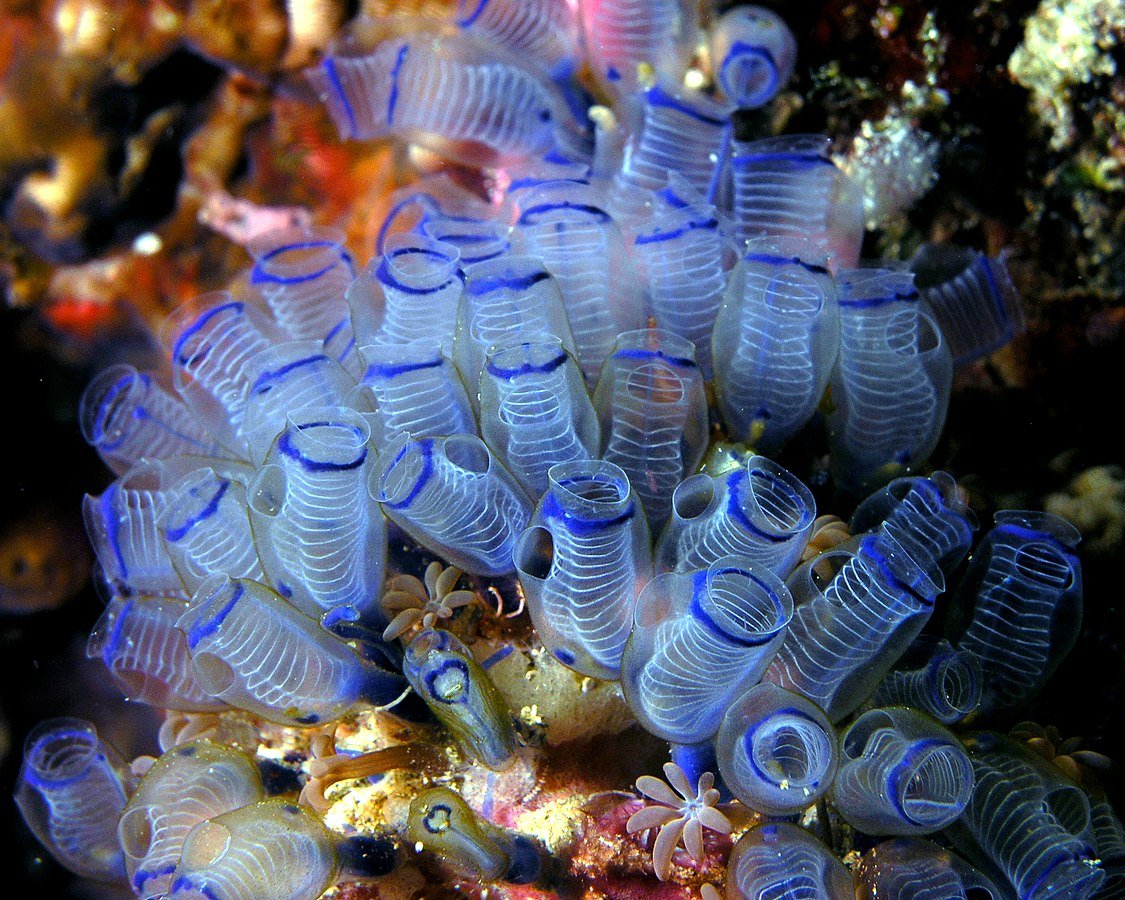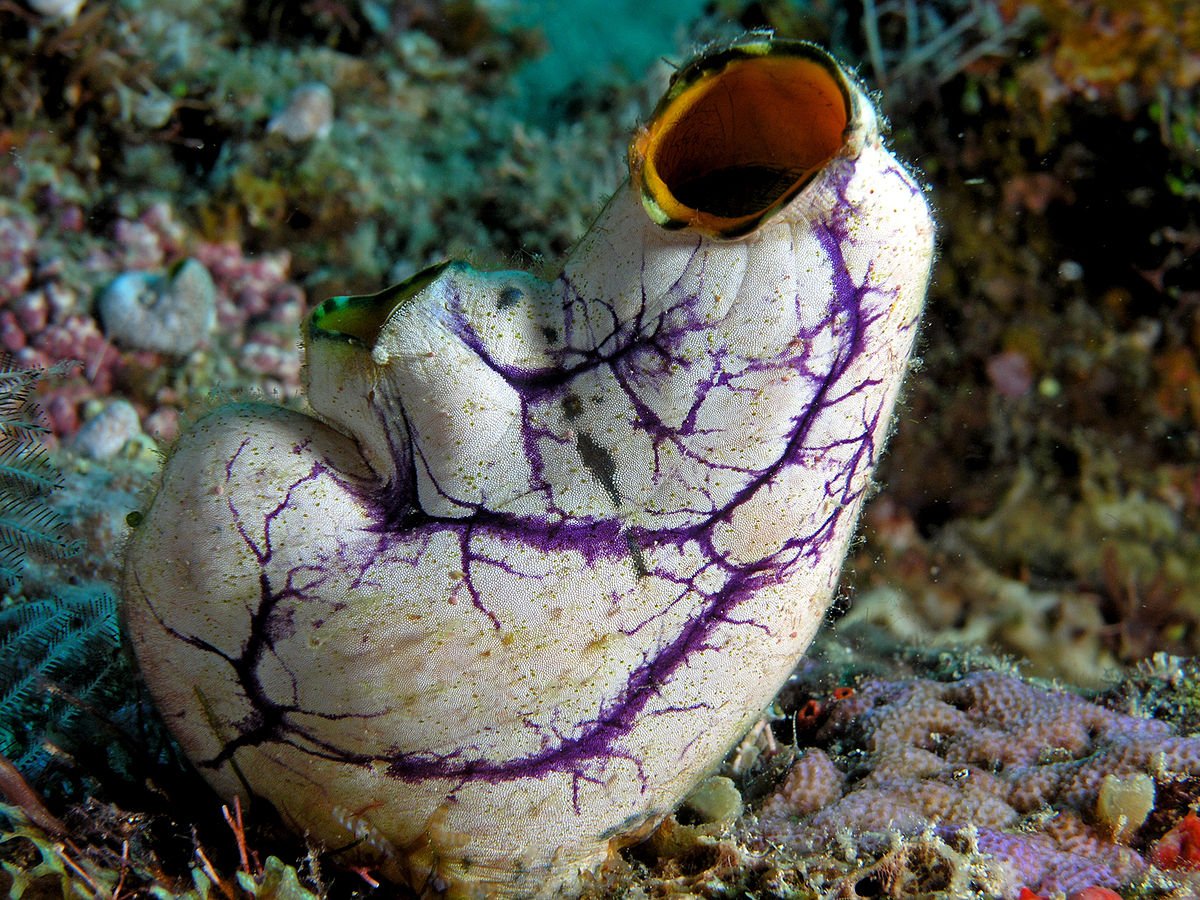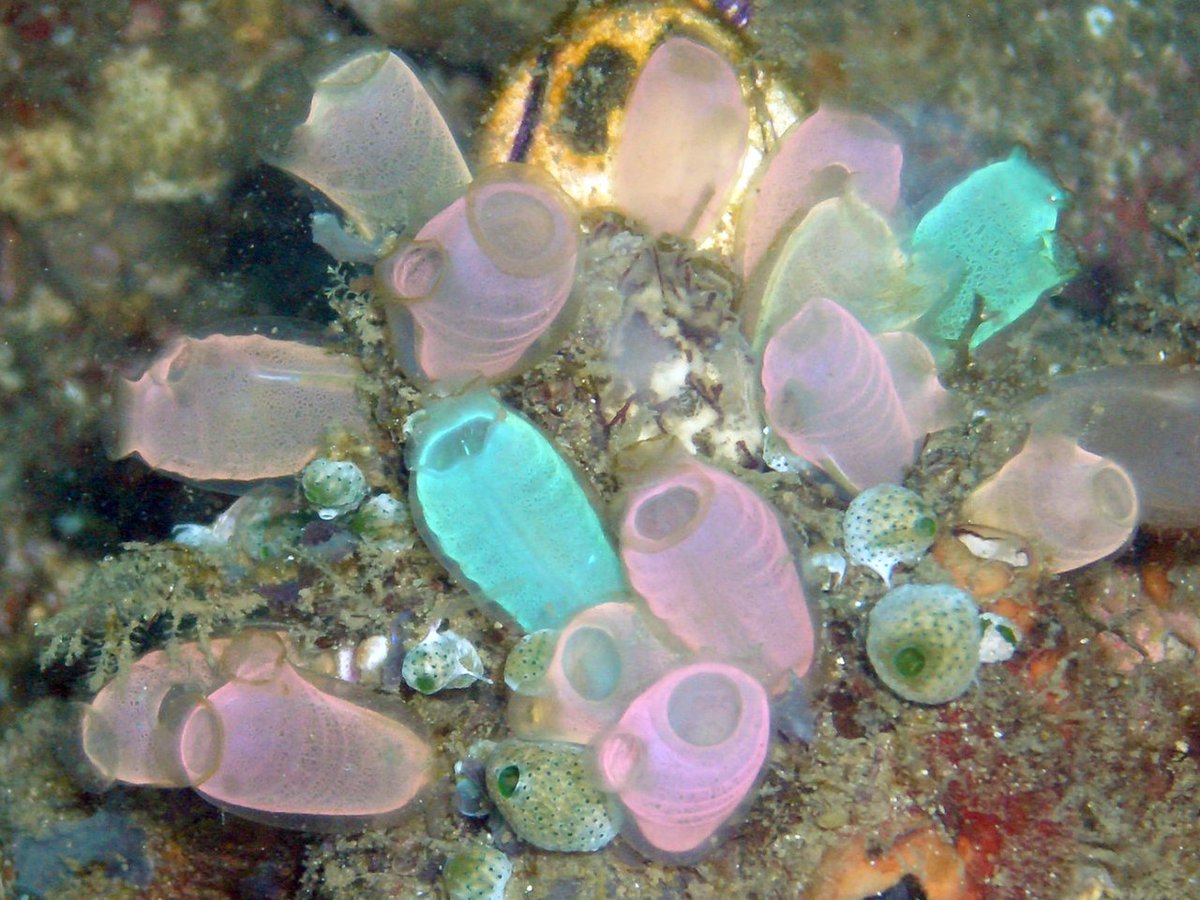Anyone want animal facts?
Too bad, because I& #39;m giving you animal facts anyways.
Let& #39;s talk about tunicates, because they& #39;re so goddamn weird.
Too bad, because I& #39;m giving you animal facts anyways.
Let& #39;s talk about tunicates, because they& #39;re so goddamn weird.
This is a tunicate- specifically, a bluebell tunicate, since there& #39;s so many different kinds:
They& #39;re marine invertebrates, and sessile (means they don& #39;t move around) filter feeders. They just wait for stuff to drift by, then eat it out of the water. Pretty decent life, honestly.
They don& #39;t start out sessile, though. They start out as these weird little tadpole things.
They don& #39;t start out sessile, though. They start out as these weird little tadpole things.
Notice the notochord? Yeah, they might be invertebrates, but only barely. They& #39;re SUPER closely related to vertebrates, a notochord is basically a proto-spine. They& #39;re actually members of the Chordata phylum, which we& #39;re also a member of. Taxonomy is super fucking weird, people.
Anyhow, so these little tunicate larva swim around and do various plankton things. Not eating, though. Their only job is to find a good rock. Once they find that rock, they latch onto it and start metamorphosing into the sessile filter feeder mode.
Some of you know what& #39;s next:
Some of you know what& #39;s next:
They eat their own brains. They don& #39;t need them anymore, so they digest them.
Not really, though. It sounds cool, but it& #39;s only partially true- they only get rid of the part of the brain that lets them move. Their total brain size (or, cerebral ganglion size, I guess) increases.
Not really, though. It sounds cool, but it& #39;s only partially true- they only get rid of the part of the brain that lets them move. Their total brain size (or, cerebral ganglion size, I guess) increases.
Still weird, gross, and cool, though.
They also grow their "tunics", the outer shell they& #39;re named for. Colonial tunicates often share a single tunic between them. (There& #39;s literally more different types of tunicates than we can count.)
They also grow their "tunics", the outer shell they& #39;re named for. Colonial tunicates often share a single tunic between them. (There& #39;s literally more different types of tunicates than we can count.)
Like, look at this weirdo- it& #39;s like someone just dyed a human heart funny colors and shoved it on the seafloor.
(Gold mouthed sea-squirt.)
(Gold mouthed sea-squirt.)
(I& #39;m just literally grabbing my photos off Wikipedia, btw.)
Anyhow, none of that is my favorite part about tunicates. My favorite bit?
Some species can absorb vanadium from seawater.
Anyhow, none of that is my favorite part about tunicates. My favorite bit?
Some species can absorb vanadium from seawater.
They use it as a defense against predation, storing it just beneath the outer surface of their tunics. The cells that contain the vanadium, the vanadocytes, can concentrate vanadium at levels of up to 10 MILLION TIMES HIGHER than the surrounding seawater.
Bonkers, right? That shit should just flood right out of the cells and back into the ocean. They have to keep it stable by storing it in, uh... sulfuric acid. Okay then.
Even more interesting than how they& #39;re storing the vanadium: How are they concentrating so much of it at all?
Even more interesting than how they& #39;re storing the vanadium: How are they concentrating so much of it at all?
Fucking weird as hell. There& #39;s definitely some chemistry there that we don& #39;t fully understand. (Hell, we don& #39;t even entirely understand WHY they& #39;re storing it in the first place- discouraging predation is only one hypothesis.) If we CAN figure out the hows, though...
That has huge technological implications. Among other things, it might let humans start, I dunno, bioengineering tunicates to absorb other rare elements out of seawater (like, uh, gold), then harvesting them. Which definitely has some immediate and obvious risks, of course-
But said risks would have to be truly bonkers to outweigh the environmental damage caused by land based gold-mining. (It& #39;s the worst.)
Or, for that matter, to outweigh undersea mining& #39;s environmental risks. Undersea mining, if allowed to proceed unchecked...
Or, for that matter, to outweigh undersea mining& #39;s environmental risks. Undersea mining, if allowed to proceed unchecked...
Well, it could be apocalyptic to our already-severely damaged oceanic ecosystems.
So, yeah. Tunicates potentially have the power to help us balance our civilization& #39;s never-ending thirst for resources with trying to preserve our oceans. If we can safely figure it out, at least.
So, yeah. Tunicates potentially have the power to help us balance our civilization& #39;s never-ending thirst for resources with trying to preserve our oceans. If we can safely figure it out, at least.
Marine biology is awesome, and it& #39;s not all following charismatic megafauna like sharks, giant squid, and whales. Sometimes humble little critters like the tunicate can be mind-bogglingly important.
/end thread
/end thread

 Read on Twitter
Read on Twitter





